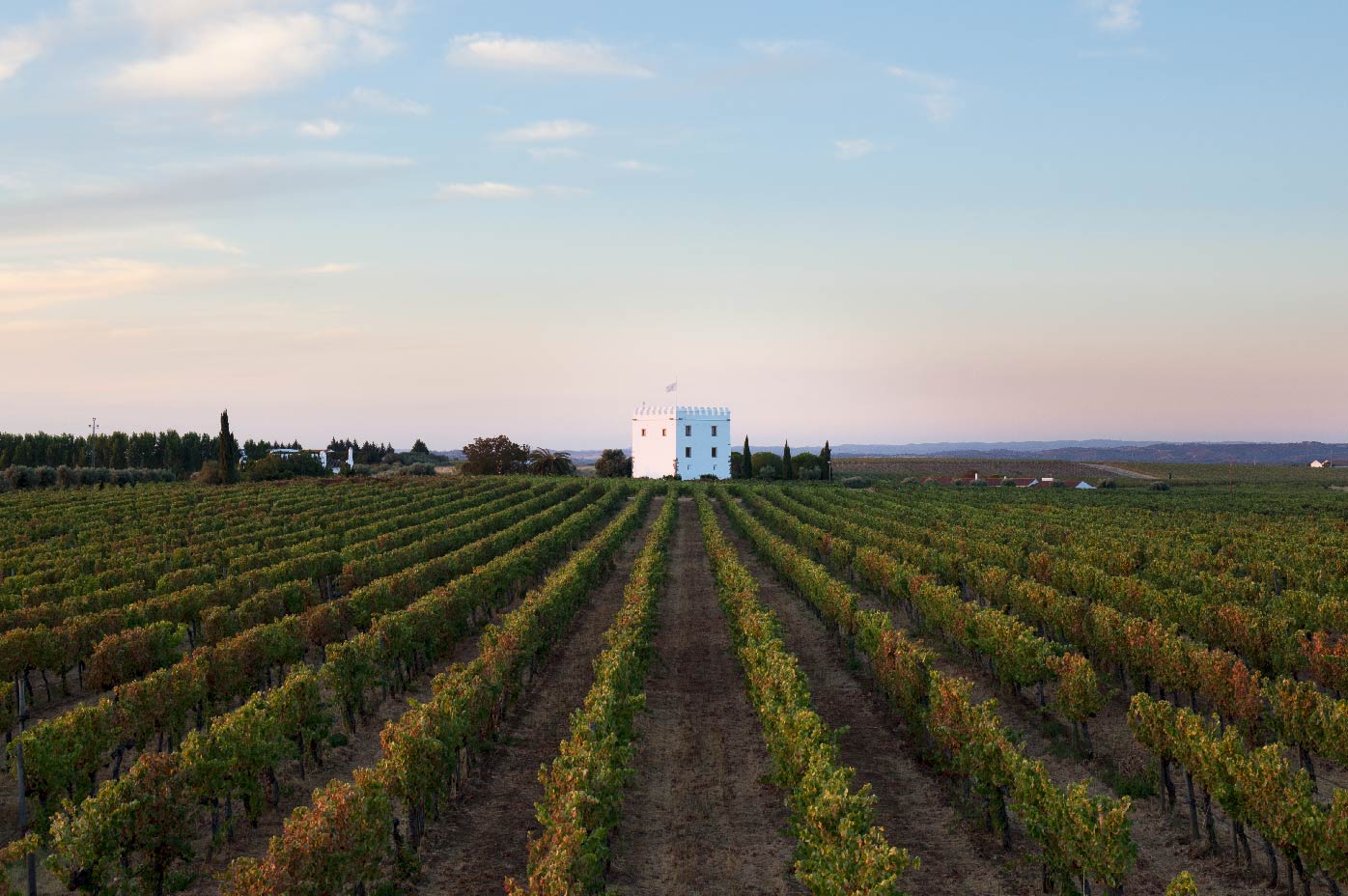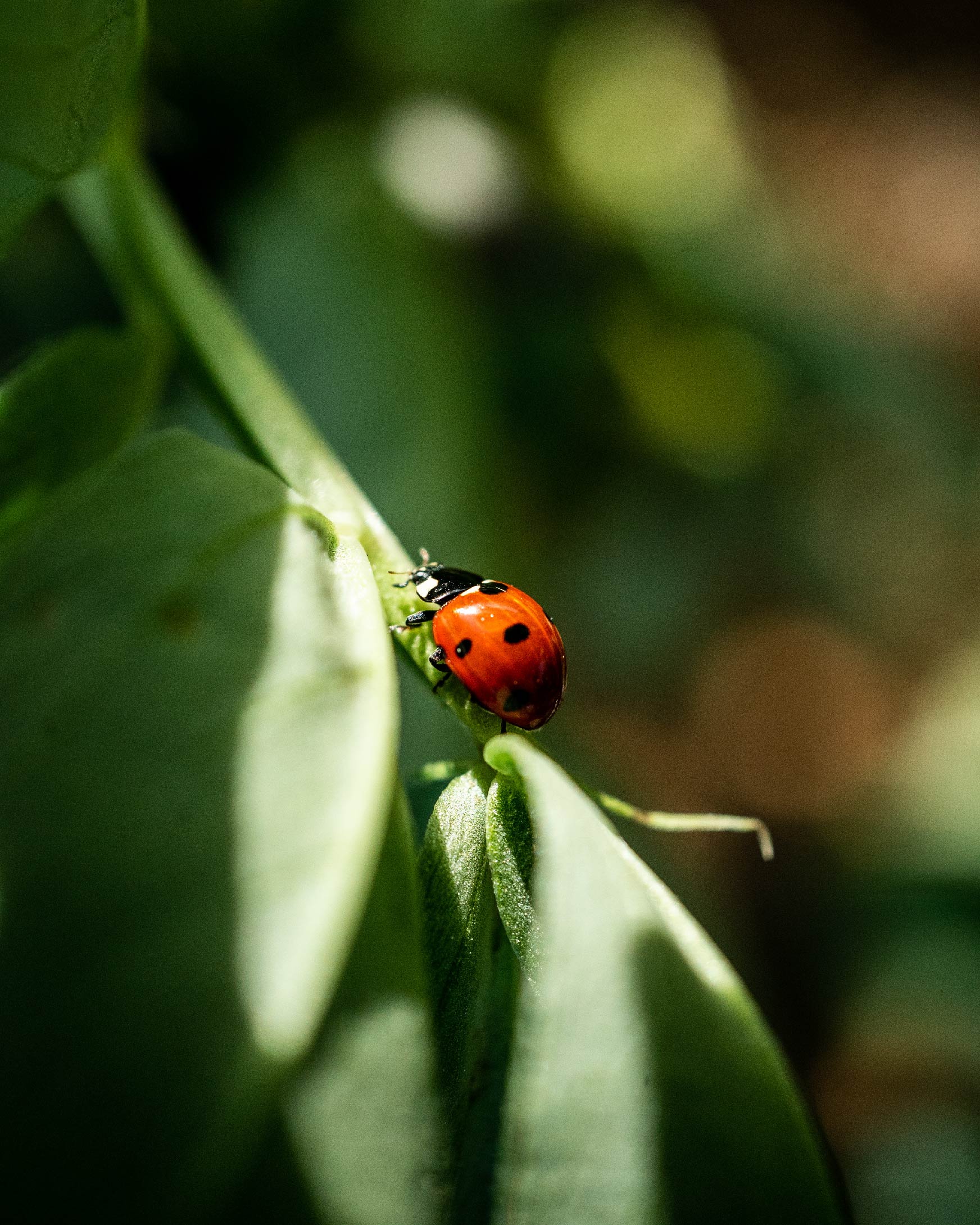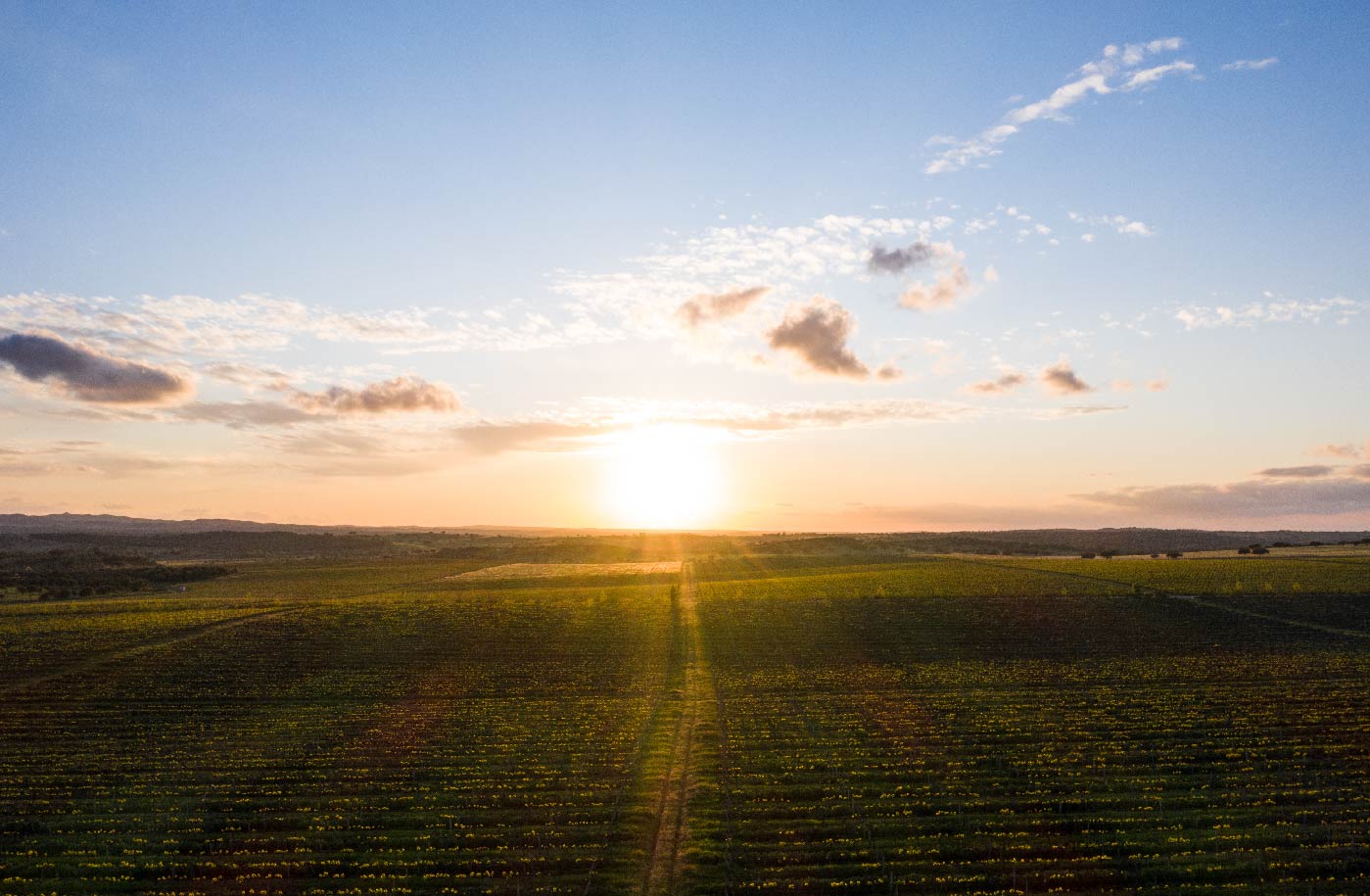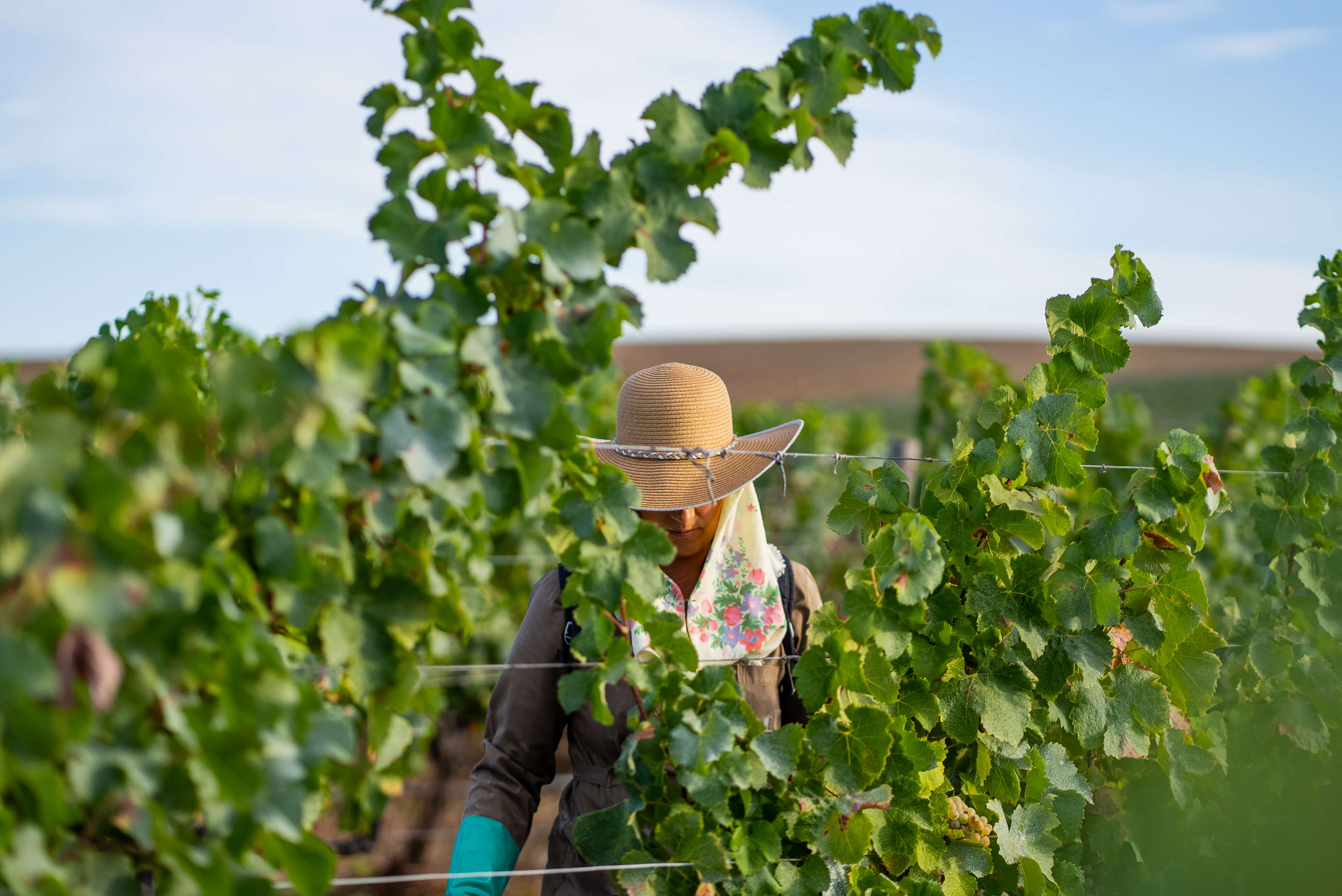The Alentejo is steeped in history, tradition, and modernity. A nature made up of fauna, flora, people, and gastronomy that invite you to take your time.


Alentejo, a region of subtleties
This is the winegrowing region with the widest variety of soils: granite, crystalline limestone-derived, Mediterranean brown and red and schist. The area is distinguished by gentle plains and shallow valleys carved out by occasional streams, a Mediterranean climate with certain areas boasting a continental microclimate and the constant presence of corn fields, vineyards and olive groves.
Summers are hot and dry, normally with over 20 days above 35° C. The springs and autumns are mild with plenty of sunny days. Winters are kind. Average rainfall during the wettest months is below 80 mm with average temperatures above 10° C, although daily temperature variations can reach 20° C.
These characteristics profoundly affect Alentejo’s fauna, flora, landscape, architecture and people.
This Denomination of Controlled Origin (DOC) is made up of 8 sub-regions with a long tradition of wine production: Borba, Évora, Granja-Amareleja, Moura, Portalegre, Redondo, Reguengos and Vidigueira.

Herdade do Esporão
Herdade do Esporão boasts almost 1,000 hectares of forest, much covered by montados (an agroforestry system) with many holm oaks and cork oaks, cistus and rosemary, meadows whose colors change according to the season, and riparian vegetation that ranges from ash and oleanders, as well as open areas of willows and reeds, along the Caridade stream and the western boundaries demarcated by the River Degebe – the two water lines that sustain the Herdade and support what it produces. There are also stone pine plantations that are currently being converted/restored to the mixed montado system.
These forestry ecosystems are the Herdade’s natural legacy and home to such iconic species as the black stork, hare and fox. The range of flora, which varies with the seasons, can be found in much of what Esporão does, like the scent of rosemary in the honey it produces, in the leaves, fruit and roots it uses in the restaurant menus, and even the wild orchids that appear at the end of winter, sprouting under the holm oaks of the montados and close to the streams.
At the heart of the Herdade we find 120 hectares of dam area. This water is stored and managed carefully using smart quality control and use systems, which attenuate the local climate and act as a haven for biodiversity, be it on the water, on the marshy banks or in the nooks covered with riparian vegetation.
Today, this ecosystem, which stems from the needs of industrial production, is a semi-natural sanctuary, where around 90% of the Alentejo’s birds have been seen, in addition to the permanency of ducks, grebes, moorhens, otters, among many other species.
Herdade do Esporão is located in the Alentejo, in the sub-region of Reguengos de Monsaraz. With a total area of 1,840 hectares and geographical boundaries unchanged since 1267, it offers unique agricultural conditions - great variations in temperature, seven different types of soil and extraordinary biodiversity. The 441 hectares of vineyards, with around 40 grape varieties, and the 93 hectares of olive groves, with 4 varieties of olives, are fully certified organic.
The Vineyards
The 441ha of vineyards planted in Herdade do Esporão's noble agricultural production areas are fully certified in organic production mode, the result of a path that began in 2010, with 81ha of olive groves, and was completed in 2019.
Herdade do Esporão currently has more than 189 varieties planted in its ampelographic field, 40 of which are in full production. These 40 fundamental varieties correspond to the grape varieties that have best adapted to the Alentejo region, many of which have been in the region since ancient times. Esporão was a pioneer in introducing some of the varieties that over time have become true ex-libris of the Alentejo - varieties such as Touriga Nacional, Verdelho or Semillon, which have added identity and quality to Alentejo wines. Some of these vineyards have ages that can already be classified as old vines.
Also the vineyards of Herdade dos Perdigões (141ha), Lavradores (11ha) and Enxofral (11ha) are in organic production mode, making all the areas of Alentejo where Esporão is located follow this production mode since 2022.
The decisions made by the viticulture team are supported and substantiated with the help of specific agricultural and viticultural technologies, such as weather stations (which provide indications regarding disease treatment opportunities), soil moisture sensors (which are important tools to support irrigation), a fully automated irrigation system and pest monitoring using biotechnical material.


Visit Herdade do Esporão
Located in the heart of the Alentejo, in Reguengos de Monsaraz, the doors of Herdade do Esporão have been open since 1997. Here you will find nature, history, and tradition.
Visit the vineyards, the olive groves, the vegetable gardens, and the ampelographic field. Discover the history of this place or take the opportunity to explore the biodiversity of this territory. Then embark on the flavors that are born here. Taste the olive oil produced in the mill, and unveil the secrets of wine making with a visit to the cellars. A wine tasting or lunch at the Herdade do Esporão Restaurant or Wine Bar is the perfect end to complete the experience.
HOW TO GET THERE
Apartado 31, 7200-999, Reguengos de Monsaraz
Évora, Alentejo
GPS Coordinates:
Latitude: 38.380098
Longitude: -7.560724
Phone number (between 10am and 6.30pm):
(+351) 266 509 280
Fax: 351 266 519 753
